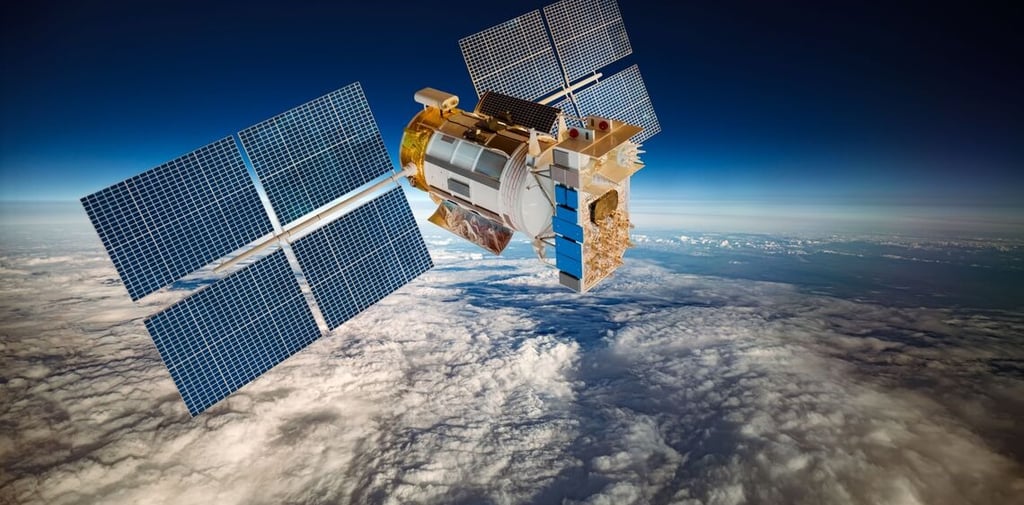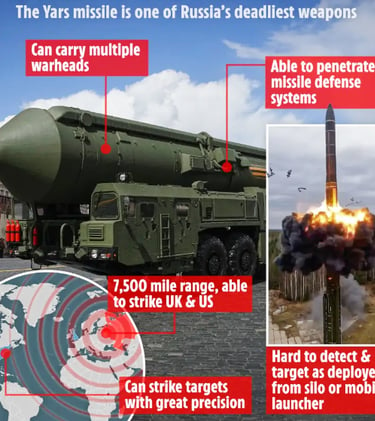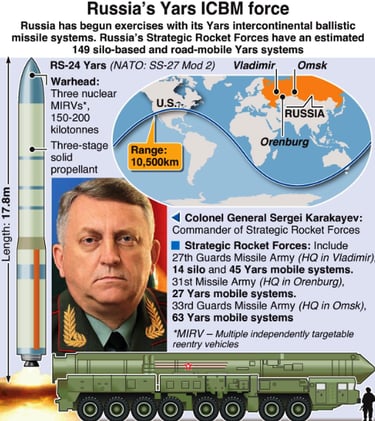🕵️♂️Get Up to 80% Off On All Products, StaySharp⚡
The Russian Nuclear Yars: Advanced Missile Guidance System and the Stress on the US GPS System
Russia's RS-24 Yars, an advanced intercontinental ballistic missile system employing the Russian GLONASS satellite network for precision guidance. Discussing the implications of this technology on the US GPS system and the balance between enhancing national defense and global security.
DEVELOPMENT AND ECONOMIC THREATS
Phillemon Neluvhalani
5/3/20243 min read


The global geopolitical landscape has always been marked by a race for military dominance, with nations constantly seeking to bolster their defense capabilities. Russia, being a major player in the field of military technology, has made significant strides in the development of its intercontinental ballistic missile (ICBM) systems. Among these, the Russian nuke Yars has garnered significant attention for its advanced missile guidance system. This article delves deep into the Yars missile system, focusing on its state-of-the-art satellite-based guidance technology and its potential implications for the US GPS system.
The Russian Nuke Yars: An Overview
The Russian nuke Yars, officially known as the RS-24, is a fifth-generation intercontinental ballistic missile designed to replace its predecessor, the Topol-M. It was developed by the Moscow Institute of Thermal Technology (MITT) and made its debut in 2010. The Yars missile system boasts enhanced performance and improved capabilities, making it a formidable force in Russia's nuclear arsenal.
The Advanced Missile Guidance System
At the heart of the Yars missile system lies its sophisticated guidance system, which plays a pivotal role in ensuring the accuracy and efficiency of its delivery. Unlike older systems that relied on inertial navigation alone, the Yars utilizes both inertial navigation and satellite-based guidance for precise targeting.
A key component of the guidance system is the Global Navigation Satellite System (GLONASS), developed by Russia to rival the American GPS system. GLONASS, like GPS, is a constellation of satellites that provides real-time positioning and navigation data to users on the ground. By incorporating GLONASS into the Yars missile system, Russia reduces its reliance on foreign technologies, enhancing its independence and strategic advantage.
The Supreme Satellite for Missile Guidance
One of the critical satellites utilized by the Yars missile system for guidance is the "Supreme Satellite," also known as "Tsiklon." This satellite is part of Russia's GLONASS constellation and is specifically designated for military applications. Tsiklon is equipped with highly accurate atomic clocks and advanced sensors, allowing it to deliver precise positioning data to the Yars missiles during their trajectory.
The Supreme Satellite operates in a highly elliptical orbit, ensuring that it spends more time over designated target regions, thus improving the accuracy of its guidance signals. Additionally, the satellite's position in a high-inclination orbit gives it a distinct advantage over geostationary systems, which can be vulnerable to jamming or countermeasures.
Stress on the US GPS System
As Russia's Yars missile system enhances its reliance on GLONASS and the Supreme Satellite for missile guidance, concerns arise regarding the potential stress on the US GPS system. The American GPS system has been the global standard for navigation and positioning services for decades. However, the increased use of GLONASS in critical military applications like the Yars missile system could potentially pose challenges for the GPS system's integrity.
One of the primary concerns is the possibility of intentional interference or jamming of the GPS signals. While the GPS system has built-in anti-jamming capabilities, its ubiquity and reliance in civilian and military applications make it an attractive target for hostile actions. In the event of a conflict, Russia could attempt to disrupt the GPS system's accuracy, affecting the operations of various US military assets and civilian infrastructure that depend on GPS positioning.
The Russian nuke Yars, with its advanced missile guidance system and reliance on the GLONASS-based Supreme Satellite, stands as a testament to Russia's commitment to modernizing its nuclear deterrent. The integration of satellite-based navigation has significantly improved the accuracy and effectiveness of the Yars missile system. However, the increased reliance on GLONASS raises concerns about potential stress on the US GPS system and its vulnerabilities during times of geopolitical tension. As technology continues to evolve, it is essential for nations to strike a balance between strengthening their defense capabilities and ensuring the stability of critical global infrastructure.







